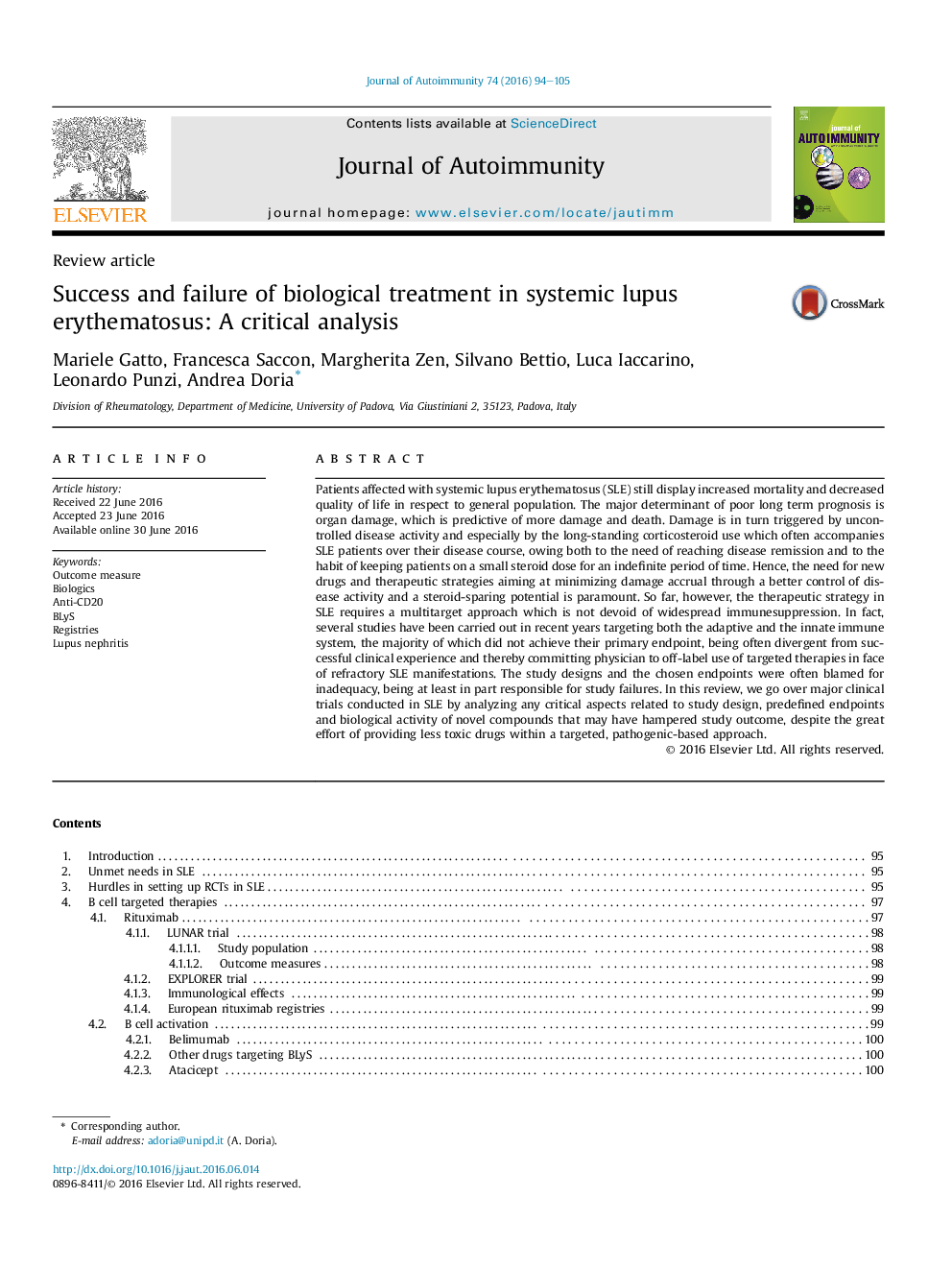| Article ID | Journal | Published Year | Pages | File Type |
|---|---|---|---|---|
| 5667900 | Journal of Autoimmunity | 2016 | 12 Pages |
â¢Major organ damage in SLE is caused by long-standing immunesuppressive therapy.â¢Several trials have failed in SLE due to disease heterogeneity and study design.â¢Rituximab is effective in refractory manifestations, especially LN.â¢B cells are still promising targets in SLE therapy.â¢Combination strategies are required to spare steroids and improve disease outcome.
Patients affected with systemic lupus erythematosus (SLE) still display increased mortality and decreased quality of life in respect to general population. The major determinant of poor long term prognosis is organ damage, which is predictive of more damage and death. Damage is in turn triggered by uncontrolled disease activity and especially by the long-standing corticosteroid use which often accompanies SLE patients over their disease course, owing both to the need of reaching disease remission and to the habit of keeping patients on a small steroid dose for an indefinite period of time. Hence, the need for new drugs and therapeutic strategies aiming at minimizing damage accrual through a better control of disease activity and a steroid-sparing potential is paramount. So far, however, the therapeutic strategy in SLE requires a multitarget approach which is not devoid of widespread immunesuppression. In fact, several studies have been carried out in recent years targeting both the adaptive and the innate immune system, the majority of which did not achieve their primary endpoint, being often divergent from successful clinical experience and thereby committing physician to off-label use of targeted therapies in face of refractory SLE manifestations. The study designs and the chosen endpoints were often blamed for inadequacy, being at least in part responsible for study failures. In this review, we go over major clinical trials conducted in SLE by analyzing any critical aspects related to study design, predefined endpoints and biological activity of novel compounds that may have hampered study outcome, despite the great effort of providing less toxic drugs within a targeted, pathogenic-based approach.
